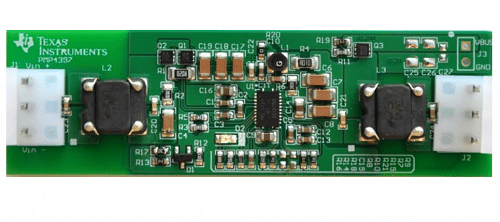Reference design for a battery charger module reference design suitable for 2-cell battery applications with a wide DC input.

Li-Ion cells are required in almost all portable wireless electronics, be it an electric toothbrush or a weighing scale. But Li-Ion cell are highly volatile and can catch fire if its not monitored carefully, especially during the time of charging and discharging. So, to enhance the safety of the device, Texas Instruments have released PMP4397, a battery charger module reference design suitable for 2-cell battery applications with a DC input of 4.5V – 15V.
The battery charger reference design from TI is suitable for charging 1S – 3s cell configuration. The charging configuration can be changed by changing the reference resistor. This reference design is configured for a 2-cell application which is suitable for charging 2s cell having a voltage of 8.4V.
The brain of this reference design is BQ24133 IC. It is a standalone highly integrated Li-Ion and Li-Polymer switched-mode battery charger with two integrated N-channel power MOSFETs. The BQ24133 charges one, two, or three cells (selected by CELL pin) at a fixed 4.2 V/cell. The reference design charges the battery in three phases: preconditioning, constant current, and constant voltage. The safety features of the reference design include thermal shutdown, cycle-by-cycle current limit, adjustable input overvoltage protection, etc.
Features of the reference design:
• Fully tested to comply with the industrial requirement (EN55022 CLASS B)
• Single chip for battery charge & outputs
• Protection includes the Input UVP, Input OVP, output OCP and OTP
• Flexible configuration of output requirements by setting resistors
• Good thermal performance with a low component count
• Small dimensions: 33mm x 50mm x 10mm
The reference design has been tested by TI to comply with the industrial requirement, the company has made the test reports public and has provided BoM, schematics, Gerber files, CAD/CAE files, etc. to simplify the design. To read more about this reference design or to download the above-mentioned resources, open this link





